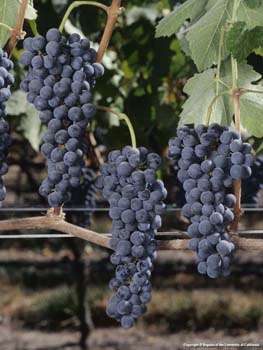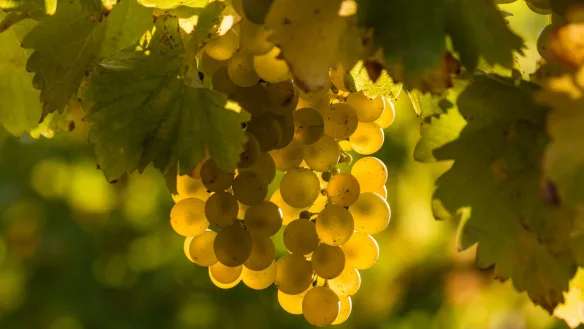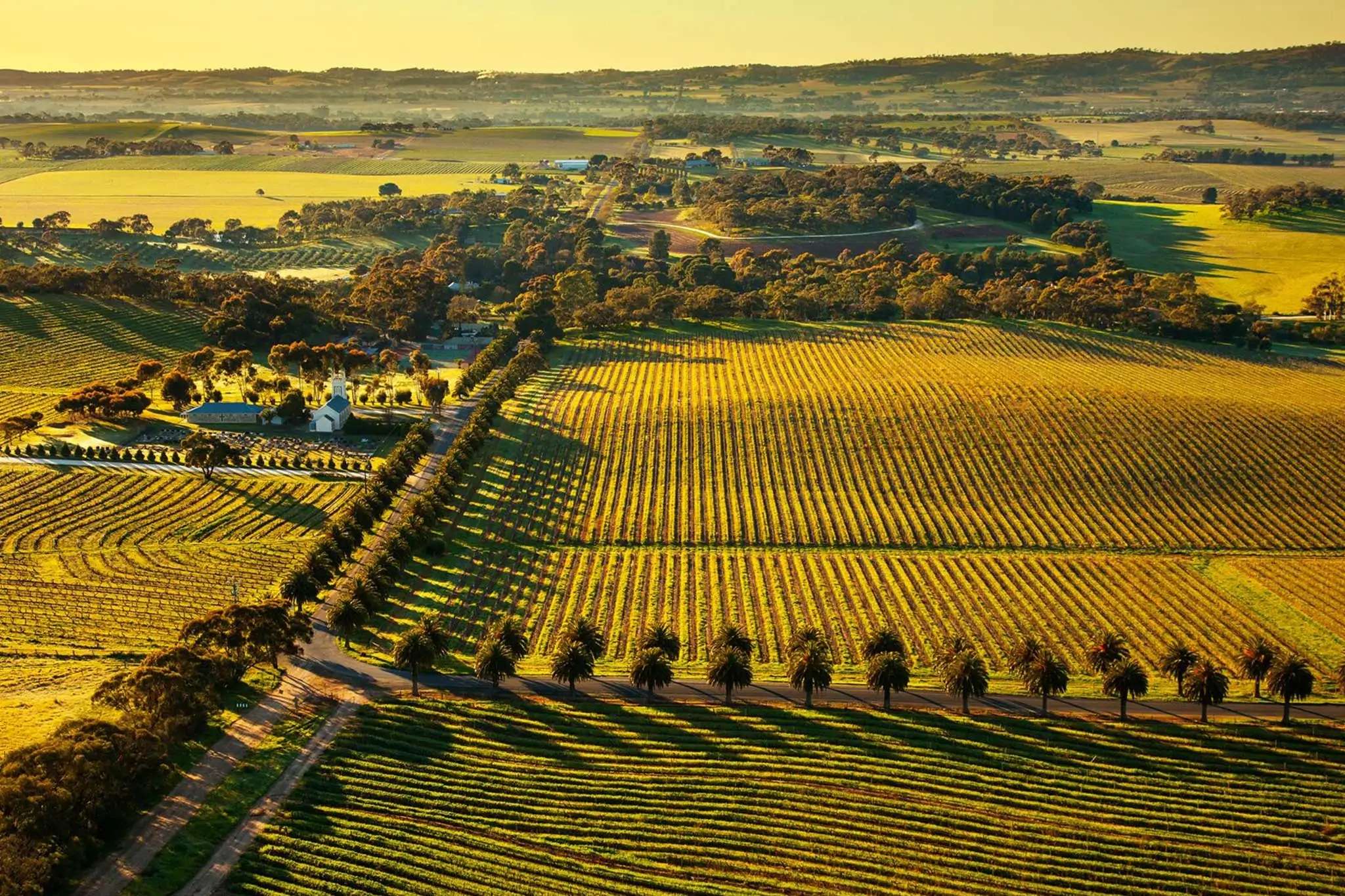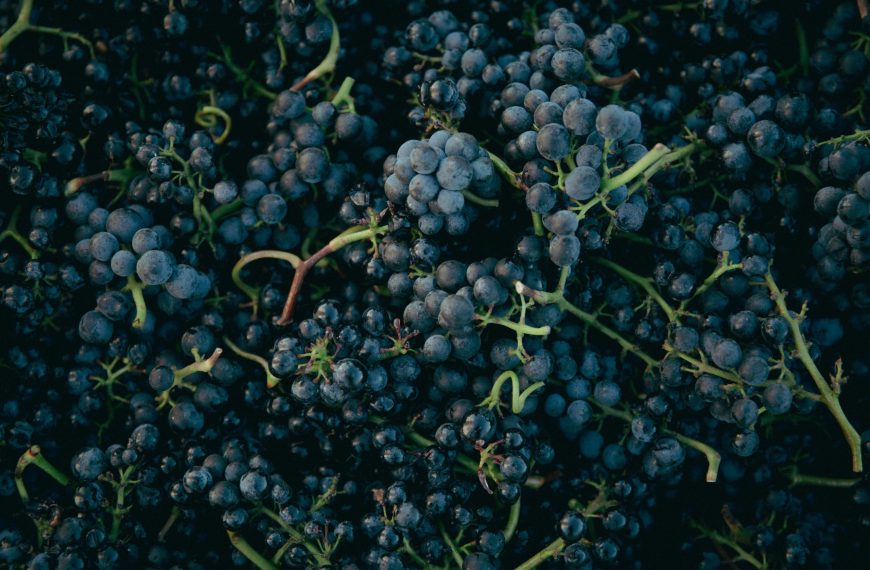Australia’s Winemaking Success and Climate
Australia has excelled in adapting international grape varieties into unique and distinctive wine styles. Some of the country’s most celebrated wines include full-bodied Shiraz, lime-flavored Riesling, elegant Cabernet Sauvignon, and subtle Semillon, which can age beautifully for decades. This diversity is set to grow as new regions, grape varieties, and wine styles continue to be explored.
Australia is a vast country, similar in size to the United States and larger than Europe, offering a wide range of climates. Most key wine-growing regions experience warm or hot climates due to its latitude. However, regions like Adelaide Hills and Eden Valley benefit from cooling effects due to altitude, while others are moderated by their proximity to the Southern or Indian Ocean or the Murray River system. Low rainfall in many areas makes irrigation essential, and drought can pose a significant challenge, with even the Murray River, which supplies water to the inland vineyards of Riverland and Murray-Darling, sometimes running low. Dry conditions and high summer temperatures also mean that bushfires are a serious risk, with smoke potentially tainting grapes and affecting wine flavors.
In response to these challenges, many producers are seeking cooler or more moderate climates for new vineyard sites. There has been an increase in plantings in high-altitude locations on the mainland and in Tasmania, which benefits from a more southerly latitude.
Grape Varieties and Winemaking
Red Varieties
 Shiraz is Australia’s most widely planted grape variety, grown in nearly all wine regions. In hot areas like Hunter Valley and warm regions like Barossa Valley, Shiraz produces full-bodied, intensely fruity wines often with earthy or spicy notes that develop leather aromas with age. Some winemakers are now crafting more restrained styles by controlling extraction levels during winemaking. In cooler regions like Geelong and Heathcote, a leaner, more peppery style of Shiraz is produced. Often, these diverse characteristics are combined in multi-regional blends. Shiraz is also used to soften and add body to blends with Cabernet Sauvignon, similar to Merlot in Bordeaux.
Shiraz is Australia’s most widely planted grape variety, grown in nearly all wine regions. In hot areas like Hunter Valley and warm regions like Barossa Valley, Shiraz produces full-bodied, intensely fruity wines often with earthy or spicy notes that develop leather aromas with age. Some winemakers are now crafting more restrained styles by controlling extraction levels during winemaking. In cooler regions like Geelong and Heathcote, a leaner, more peppery style of Shiraz is produced. Often, these diverse characteristics are combined in multi-regional blends. Shiraz is also used to soften and add body to blends with Cabernet Sauvignon, similar to Merlot in Bordeaux.
Cabernet Sauvignon from Australia tends to be darker with firmer tannins and higher acidity than Shiraz, offering ripe black fruit flavors (blackcurrant, black cherry) often supported by toasty oak notes. Classic regions for Cabernet Sauvignon include Coonawarra and Margaret River. Merlot in Australia is typically blended with Cabernet Sauvignon to add body and fleshy, plummy fruit.
Pinot Noir thrives in cooler or moderate regions such as Yarra Valley, Mornington Peninsula, and Tasmania, producing medium-bodied wines with medium alcohol, medium to high acidity, and flavors of cherry and strawberry.
Australia’s hot regions are well-suited for late-ripening varieties like Grenache, Petit Verdot, and Mataro (Mourvèdre). Additionally, Italian and Spanish varieties like Sangiovese and Tempranillo have gained popularity in recent years due to their adaptability to high summer temperatures and limited water availability.
White Varieties
Chardonnay is the most widely planted white grape in Australia, grown in various regions and produced in a wide range of styles. Basic Australian Chardonnay is often a blend of fruit from different regions, sometimes produced unoaked to highlight peachy flavors, or with the use of oak chips or staves to add hints of toast and vanilla. At the higher end, Chardonnays from cool to moderate regions like Adelaide Hills, Mornington Peninsula, and Yarra Valley, as well as warmer areas like Margaret River, are known for their balance, fresh fruit flavors, and subtle complexity from careful use of lees, malolactic fermentation (MLF), and oak maturation.
Sauvignon Blanc has grown in popularity both domestically and in export markets, leading to increased plantings. The moderate climate of Adelaide Hills has established itself as the benchmark for this variety, with wines showcasing concentrated passion fruit flavors and refreshing acidity.

Semillon is used to make distinctive wines that are unique to Australia, particularly in Hunter Valley, where it is harvested early with low sugar levels and high acidity. These wines are fermented and stored in inert vessels with minimal oxygen exposure, resulting in light, neutral wines that develop extraordinary flavors of honey and toast with age. The best Hunter Valley Semillons can age for 20 years or more. In contrast, Western Australian Semillon tends to be more herbaceous, resembling Sauvignon Blanc. Barossa Valley traditionally made fuller-bodied, softer Semillon, but early-picked, unoaked versions are now increasingly popular.

Riesling in Australia is also unique, typically offering pronounced citrus aromas and flavors (lime, lemon, grapefruit) in youth, which evolve into notes of toast, honey, and petrol with age. These wines are usually unoaked, with high acidity, and are typically dry or slightly off-dry, although some sweet versions are also produced. Classic Riesling regions include Eden Valley and Clare Valley in South Australia, with Tasmania and the Frankland River sub-region of Western Australia also gaining reputations for high-quality Rieslings. In these regions, the wines are less citrusy and more floral.
Wine Regions
South Eastern Australia Zone
This ‘super-zone’ encompasses all the Geographic Indications (GIs) within South Australia, Victoria, New South Wales, and Queensland, allowing for the blending of grapes or wines from across most of Australia’s wine regions. Most wines labeled with this indication are high-volume brands, benefiting from the ability to source fruit from fertile, irrigated vineyards in regions like Riverland in South Australia, Murray-Darling in Victoria, and Riverina in New South Wales. These regions produce high yields of healthy grapes but often lack the flavor concentration of those from more prestigious areas. Blending in components from regions like Barossa, Adelaide Hills, or McLaren Vale can enhance these wines, with the choice of components depending on the grape variety, style, and price point.
Riverina is also known for producing botrytized wines from Semillon, with the region’s autumn mists and fogs favoring the development of noble rot.
South Australia
The majority of Australia’s wine production comes from South Australia, with vineyards concentrated in the state’s southeast. With such a range of premium vineyard locations offering different characteristics, some of Australia’s most prestigious and expensive wines are simply labeled South Australia, taking advantage of the blending opportunities provided by this GI.
Barossa Valley

Located north of Adelaide, Barossa Valley is the heartland of fine wine production. In its warm, dry climate, old bush vines produce outstanding Shiraz, Cabernet Sauvignon, and Grenache. Classic Barossa Valley Shiraz is full-bodied, with soft tannins and ripe black fruit complemented by sweet American oak. As it ages, the wine develops aromas of leather and spice. The most notable white variety is Semillon, increasingly made in a fresh, unoaked style. Wines labeled Barossa come from the Barossa zone and can be made from fruit sourced from both Barossa Valley and Eden Valley.
Eden Valley
Situated in the hills to the east of Barossa Valley, Eden Valley has a cool to moderate climate that varies with altitude. The cooler vineyards produce outstanding Rieslings with intense lime and grapefruit aromas and a steely character. These wines have great longevity, developing marmalade and toasty characters over ten years. Shiraz, Chardonnay, and Cabernet Sauvignon are also successfully grown here.
Clare Valley
Riesling is also the specialty of Clare Valley, located northwest of Barossa Valley. The warm climate here is moderated by cool afternoon breezes and cold nights. Many vineyards are planted at altitudes ranging from 300 to 400 meters, with some as high as 570 meters. Clare Valley Rieslings are dry, with intense citrus and lime aromas and high acidity. With bottle age, they can develop honey and toast characters. Clare Valley Shiraz is fragrant, powerful, and structured, while excellent quality Cabernet Sauvignon is also produced, with styles varying depending on vineyard location, soil, and elevation. The best red wines have long cellaring potential.
Adelaide Hills
Located 25 kilometers east of Adelaide, Adelaide Hills has a moderate climate, with all vineyards planted above 400 meters in altitude. Rainfall occurs mainly in winter, and the soils have limited water-holding capacity, making irrigation necessary during the growing season. The region specializes in making refreshing Sauvignon Blancs and elegant Chardonnays with high natural acidity and pronounced citrus and peach aromas. Pinot Noir is also grown for still red wines and blending with Chardonnay for sparkling wine.
McLaren Vale
Located on the coast south of Adelaide, McLaren Vale benefits from afternoon breezes from the nearby ocean that temper the warm climate. The region primarily produces red wines from Shiraz, Cabernet Sauvignon, Merlot, and Grenache, which are intensely flavored with dark fruit aromas and soft, ripe tannins. Some old vine Shiraz and Grenache are used to create wines with depth and complexity.
Coonawarra
Coonawarra is a narrow strip of land with distinctive red, terra rossa soil over a limestone subsoil, located 400 kilometers southeast of Adelaide, near the Victorian border. The region has a moderate maritime climate influenced by cold Antarctic currents and cloud cover that moderates summer temperatures. Cabernet Sauvignon predominates here, producing concentrated, structured wines with characteristic cassis and eucalyptus or menthol aromas. The best examples age very well. Shiraz, Merlot, and Chardonnay are also widely planted.
Victoria
Victoria offers some of the coolest vineyard locations on the Australian mainland. The wine regions around Melbourne and Port Phillip Bay benefit from ocean breezes, providing cool enough conditions to grow high-quality Pinot Noir, Chardonnay, and grapes for sparkling wine. Further inland, the Great Dividing Range offers a range of altitudes and aspects. High-altitude sites like those in Macedon Ranges and Upper Goulburn produce elegant Pinot Noir and Chardonnay, as well as intensely flavored Sauvignon Blanc and Riesling.
Yarra Valley
Located northeast of Melbourne, Yarra Valley is one of Australia’s oldest wine regions, with a cool to moderate maritime climate and significant variations in altitude. It is best known for its Pinot Noir, which typically shows ripe red fruit flavors (strawberry, plum, dark cherry) with soft tannins and careful use of oak, adding subtle notes of toast and vanilla. Sparkling wine is also important here, as well as high-quality Chardonnay, often made with lees stirring and MLF, giving it a rich, textured palate. Other red varieties like Shiraz and Cabernet Sauvignon are also produced in elegant styles, with Shiraz sometimes showing a distinctive peppery character.
Mornington Peninsula
Located to the south of Melbourne, Mornington Peninsula experiences a cool to moderate maritime climate, with cooling sea breezes tempering the warm summer temperatures. The region’s topography leads to vintage variation due to the risk of cool, wet, and windy weather at flowering and harvest. Pinot Noir and Chardonnay are the specialties here, with Pinot Noir offering red fruit flavors (strawberry, plum) and soft tannins. High-quality Chardonnay with refreshing acidity and citrus and pear flavors is also produced.
Geelong
Located southwest of Melbourne, Geelong has a similar cool to moderate climate to Mornington Peninsula, producing high-quality, complex, full-bodied Chardonnays with concentrated stone fruit aromas. Pinot Noir and Shiraz are also important, with Shiraz often showing earthy and peppery notes.
Heathcote
Further inland, Heathcote is located to the east of the Mount Camel Range. The vineyards here benefit from a moderate climate due to altitude (ranging between 160 and 380 meters), rather than proximity to the ocean. The wines are known for their firm structure and freshness, with Shiraz being the most planted variety. Other varieties include Grenache, Sangiovese, and Tempranillo.
Goulburn Valley
Located further north, Goulburn Valley is warmed by the inland heat of central Victoria. This region is home to some of Victoria’s oldest vineyards. Shiraz is the most important grape, but Marsanne is also notable, producing white wines with distinctive lemon and floral aromas that gain honeyed complexity with age.
New South Wales
New South Wales has a wide range of climates and produces a diverse array of wines. The majority of production comes from the hot, irrigated region of Riverina. However, the state is also home to some of Australia’s oldest and most prestigious wine regions.
Hunter Valley
The Hunter Valley, located 130 kilometers north of Sydney, is Australia’s oldest and most famous wine region. It has a warm, humid climate, with high cloud cover and ocean breezes moderating the heat and high rainfall during the growing season. However, these factors can lead to significant issues with rot, which are managed through canopy management techniques.
The region is best known for its Hunter Valley Semillon, which is made in a unique style. The grapes are harvested early with low sugar levels and high acidity, then fermented in inert vessels. The young wines are light in body with a neutral flavor profile but develop complex, toasty, and honeyed characters with bottle age. Hunter Valley Shiraz is also renowned, with a medium body, medium alcohol, high acidity, and soft tannins. The wines typically display red fruit and earthy, spicy flavors and can age gracefully.
Western Australia
Western Australia’s wine regions are largely concentrated in the southwest corner of the state, with most of the vineyards benefiting from a moderate maritime climate influenced by the Indian and Southern Oceans. The state is known for producing some of Australia’s highest-quality wines, with a particular focus on premium Cabernet Sauvignon and Chardonnay.
Margaret River
Located three hours south of Perth, Margaret River enjoys a warm maritime climate with plentiful rainfall during winter. The region is renowned for producing high-quality Cabernet Sauvignon, which tends to be elegant and well-structured, with fine tannins and flavors of blackcurrant and dark fruits. Bordeaux-style blends with Merlot are also common. Margaret River is also famous for its white wines, particularly Chardonnay, which often displays ripe stone fruit and citrus flavors with subtle oak influence. Sauvignon Blanc and Sémillon are also widely planted, often blended to create zesty, aromatic wines with refreshing acidity.
Great Southern
The Great Southern region is a vast area encompassing a range of climates and terroirs. The sub-regions of Mount Barker and Frankland River are particularly well-known for their Riesling, producing wines with intense citrus and lime flavors and high acidity. The region also produces high-quality Shiraz, with a peppery, cool-climate character, as well as elegant Cabernet Sauvignon.
Australia’s wine industry is dynamic, with a focus on innovation and quality. The country’s diverse climates and terroirs, combined with a willingness to experiment with new grape varieties and winemaking techniques, ensure that Australian wines remain at the forefront of the global wine market.









Comments